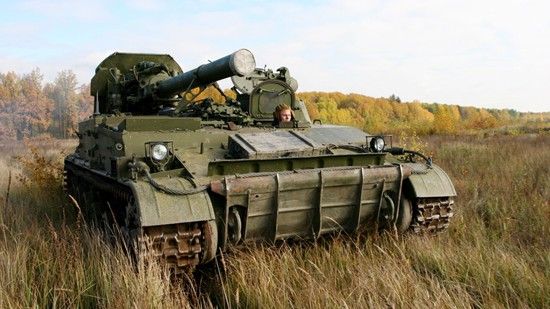Land Forces
Ukraine: Polish UAVs Designating Targets for HIMARS

Photo. mil.ru
During the fights in Ukraine, a Polish-made FlyEye UAV detected a heavy Russian 2S4 Tyulpan mortar system. Then, that platform was destroyed by a HIMARS rocket artillery round.
The Armed Forces of Ukraine are still conducting deep strikes against the Russian units in the occupied areas. Russian 2S4 Tyulpan mortar has recently been destroyed by a rocket artillery round launched from a HIMARS system. The target, interestingly, was designated by a Polish FlyEye UAV.
#Ukraine: A Russian 2S4 Tyulpan 240mm self-propelled mortar was destroyed by a GMLRS strike of the Ukrainian army near Zaitseve, #Donetsk Oblast - filmed by a 🇵🇱 WB FlyEye recon UAV. pic.twitter.com/iICkJrZPa1
— 🇺🇦 Ukraine Weapons Tracker (@UAWeapons) July 16, 2023
The recording captured by FlyEye was then published by the Ukraine Weapons Tracker outlet, among other sources. The recording clearly shows the Russian equipment being hit by a GMLRS rocket launched by a HIMARS system.
Let us add, that Kiyv is receiving two types of GMLRS missiles - Unitary, with a HE warhead, and Alternative Warhead, containing ca. 200 thousand pre-fragmented tungsten balls, designed to act against area targets. The latter warhead replaces cluster warheads.
The WB Group's FlyEye UAVs are valued highly by the Armed Forces of Ukraine, especially for their resilience when it comes to jamming and enemy electronic countermeasures. Not only are they used to direct tube artillery, but also the GMLRS missiles, with a range exceeding 80 kilometers. These missiles are not always used to strike targets at the maximum range.
Meanwhile, the 240 mm 2S4 Tyulpan mortars, are among the heaviest of the Russian artillery assets. They use mortar bombs that are 1.5 - 2.4 meters long, weighing 130-228 kilograms, where the warhead weighs from 32 to 46 kilograms. The range depends on the type of ammunition, but it may reach up to 20 kilometers. There is a possibility of employing the 1K113 laser-guided projectiles as well.
The disadvantages of this mortar include a low rate of fire and obsolete design dating back to the 1970s - the system was originally designed to use nuclear mortar bombs. Paradoxically, the Cold War origin of the system is a compensatory measure, as the Russians could have had up to 400 mortars as such in the reserves, even though just 40-60 remained in active service before the war.
Currently, these mortars are more and more frequently destroyed by artillery employing PGMs - the same applies to the heavy 203 mm 2S7 guns. Krab howitzers are also used in engagements against such systems.
